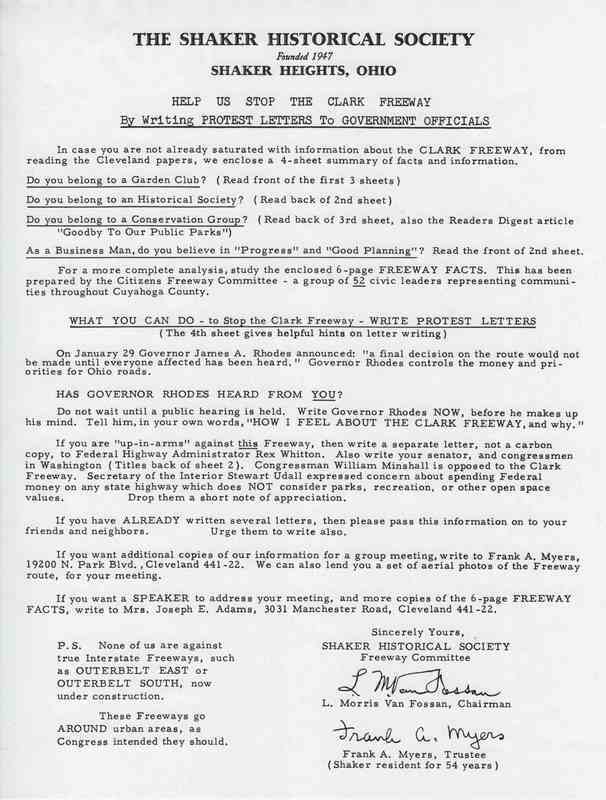The Shaker Lakes Freeway Fight

The Shaker Lakes are man-made bodies of water created by the North Union Shaker Community in the mid-nineteenth century to power a series of mills. When the Shakers left and their lands became part of the suburb of Shaker Heights, the lakes remained, becoming the focal point of a series of parks. In the 1960s, however, the parks surrounding the Shaker Lakes were threatened by a proposal that sought to construct freeways through both Shaker Heights and Cleveland Heights.
One of the most important developments in Cleveland (and big cities as a whole) after World War II has been the emergence of vast freeway systems, spurring the growth of suburbs and sparking an exodus of residents from within central cities themselves. The fact that Shaker and Cleveland Heights have remained free of such roads is no accident. In 1963, a plan by Cuyahoga County Engineer and Democratic Party leader Albert Porter to run the Clark, Lee, and Heights Freeways through the two suburbs sparked outrage among its residents. Porter, a powerful politician whose leadership at the County Engineer's Office from 1943 onward had contributed to the success of the postwar freeway construction boom, soon emerged as the prime villain in the affair, brashly demanding for construction to commence despite a number of protests.
Women played a large role in the successful effort to block the Heights freeways from being built. Women's organizations were fundamental in the 1966 creation of the Nature Center at Shaker Lakes, which highlighted the educational and environmental significance of the threatened Doan Brook watershed. The fight against the freeways also benefited from the fact that Cleveland Heights and Shaker Heights were very prosperous suburbs filled with wealthy residents, some of whose homes faced destruction. Activists in the Heights pressured state and local leaders to reroute the freeways. In February 1970, Ohio Governor James Rhodes, who was running for the U.S. Senate that fall, finally scrapped the project. Porter's career ended in disgrace when he plead guilty to several counts of theft in office in 1979. The Nature Center remains open and has since taught generations of young people about the importance of the environment.
Video
Images






